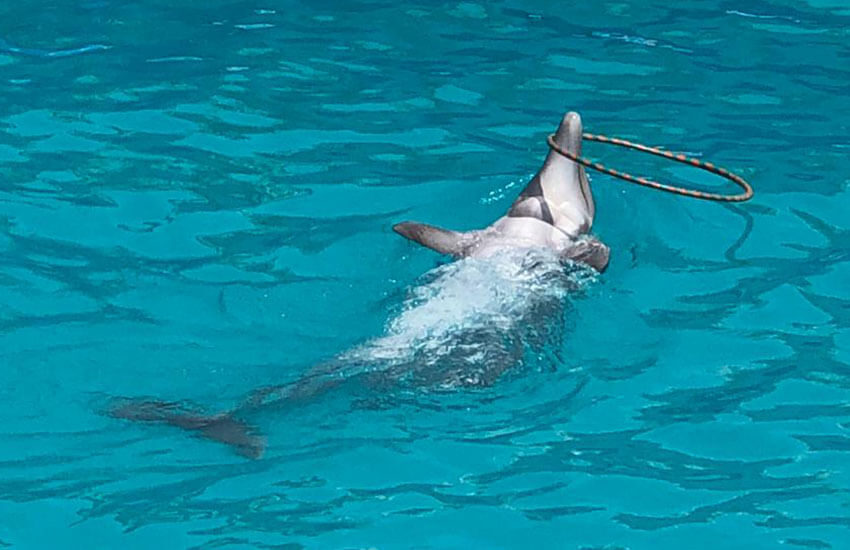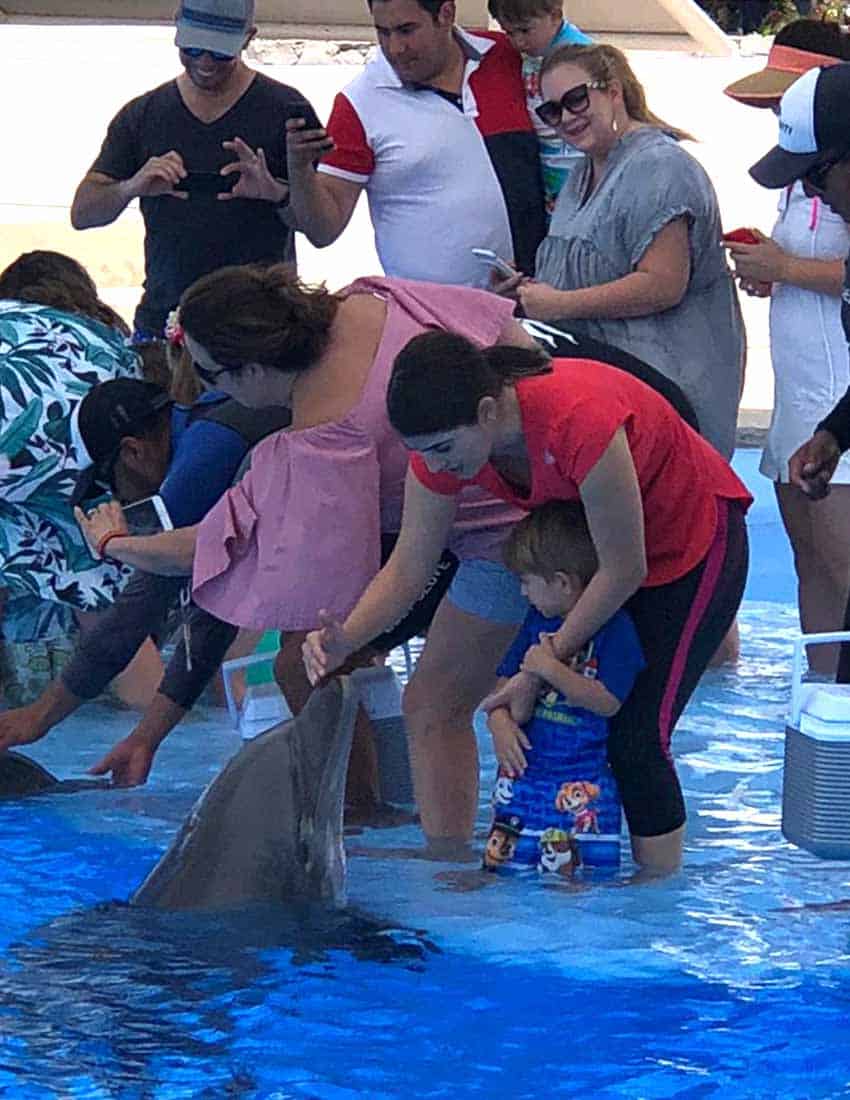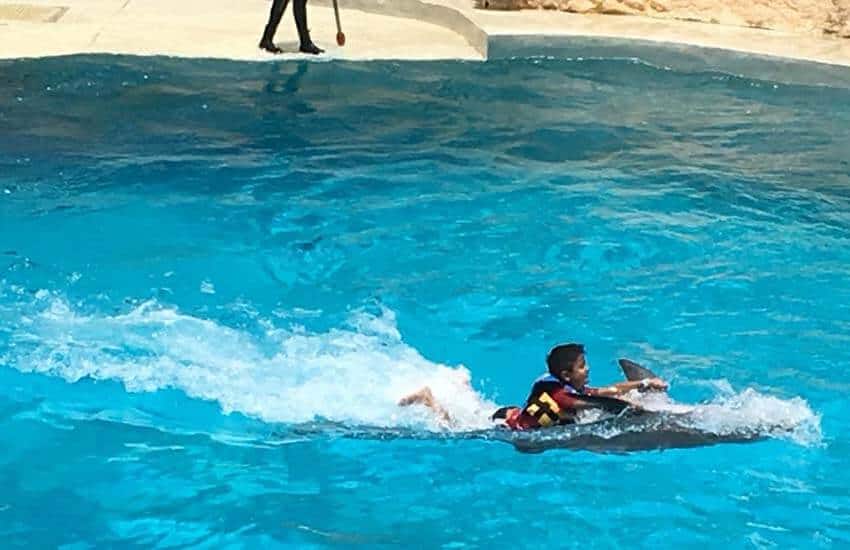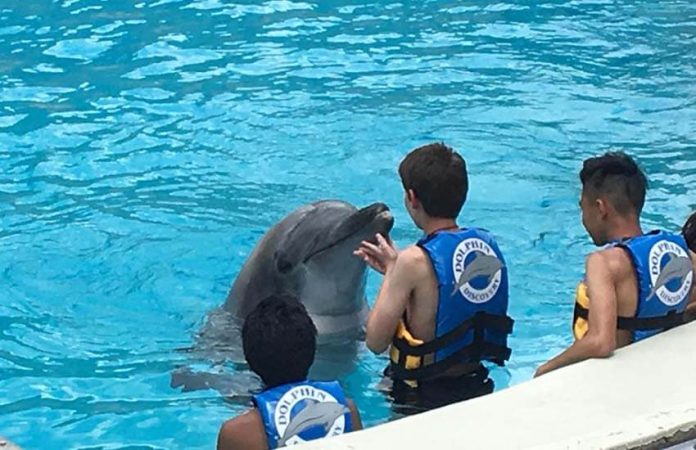The captive dolphin industry in Mexico has been growing without regulation since the 1970s, when the Aurrera department store chain exhibited dolphins outside its doors to attract clients.
By 2008, a total of 260 dolphins were registered in 26 facilities in Mexico, says Dr. Yolanda Alaniz Pasini, a consultant with the Mexico City NGO Conservation of Marine Mammals of Mexico. Such facilities exist in mostly tourist areas, and the cetaceans are kept in concrete ponds, sea pens and the most recent modality designed — in pools at luxury hotels, Alaniz says.
Today, there are 21 such facilities across the country. Known as dolphinariums — aquariums solely for dolphins — their owners promote them as being for educational or entertainment purposes or both.
Opponents condemn them as prisons masquerading as refuges, but advocates say that they are teaching tools in the fight to conserve dolphins across the globe and that it’s not a question of where cetaceans are kept but the amount of training and enrichment they’re given for adequate mental stimulation. But at the heart of the issue is a simple ethical question: is it right to keep sentient creatures in captivity for our own purposes?
“The short answer [for] many,” says Alaniz, “is no.”

For years, Alaniz has been a fierce advocate for the rights of cetaceans and other animals. She believes that it’s time to end dolphin captivity forever. When a dolphin’s biological instincts are stymied by lack of freedom, their mental health degrades, endangering their physical well-being, she says.
“Recent studies have shown that neurological changes in the brain of captive orcas and other cetaceans are related with the lack of opportunity to display fully [their] brain capacities, due to the adverse effects of an impoverished captive environment and the chronic stress,” she says. “[In captivity], animals do not choose anything anymore.”
“It is tentatively reasoned, therefore, that stress, boredom and isolation as a result of restricted movement have a plethora of deleterious effects on the health of captive cetaceans — a staggering 50% of captive dolphin deaths have stress as an underlying cause,” she added.
Moreover, Alaniz says, the exceptional intelligence of dolphins has been widely documented in scientific literature for decades now. Not only do cetaceans possess the neurobiological equipment considered essential for intelligence they also have one of the highest encephalization quotients in the animal kingdom (basically, a ratio of an animal’s brain mass in comparison to the average for species of that body size).
Dolphins routinely exhibit behaviors concordant with what we term intelligence: self-awareness, emotion, social complexity in groups — they have distinct personalities as well as cultures passed down through generations.
Comparable to putting a person in a box and expecting them to be emotionally and intellectually satisfied, dolphins’ cognitive sophistication makes it impossible to meet their complex needs within a captive environment.

Even the argument that we can use dolphins in captivity to understand their free-range behavior hardly stands up to scrutiny, Alaniz argues: the laundry list of damages wreaked by living in a facility means that how they act in captivity doesn’t accurately represent how dolphin societies really operate. Facilities are, by nature, incapable of replicating the conditions of open waters.
“No dolphinarium, however large it may be,” Alaniz says, “reaches even 2% of what would be a reasonable habitat and swimming range for dolphins. We see, therefore, severe neurological damage that produces stereotypies [repetitive activity with no obvious function] and aggression since the animals have no free choice and cannot defend themselves. [This] leads to learned helplessness and stress.
“Saying that dolphinariums are educational is a pious platitude that misses the point entirely.”
Dolphinariums masquerading as cetacean refuges only escape public revilement because the captivity industry has created a parallel language to justify its cruelty in response to growing international outcry against the practice for entertainment purposes, Alaniz says. By softening the terms used, it continues to sell dreams to a misguided public.
Under this linguistic guise, the term “captivity” — and all the implications of loss of freedom that the term carries — becomes “animals under human care,” in which anthropogenic interference becomes a positive trait. Small enclosures are now called “habitats” to make them sound bigger.
“Most certainly, no dolphinarium is a sanctuary,” Alaniz states. “They are merely dolphin captivity facilities.”

Changes are being made: in 2018, Mexico City passed a law prohibiting the use of marine mammals for display. But progress is slow.
Tourists are still being peddled the “experience of a lifetime,” Alaniz says, based on a euphemistic image of dolphinariums that has no bearing on the real lives of the animals contained within them.
Shannon Collins is an environment correspondent at Ninth Wave Global, an environmental organization and think tank. She writes from Campeche.
